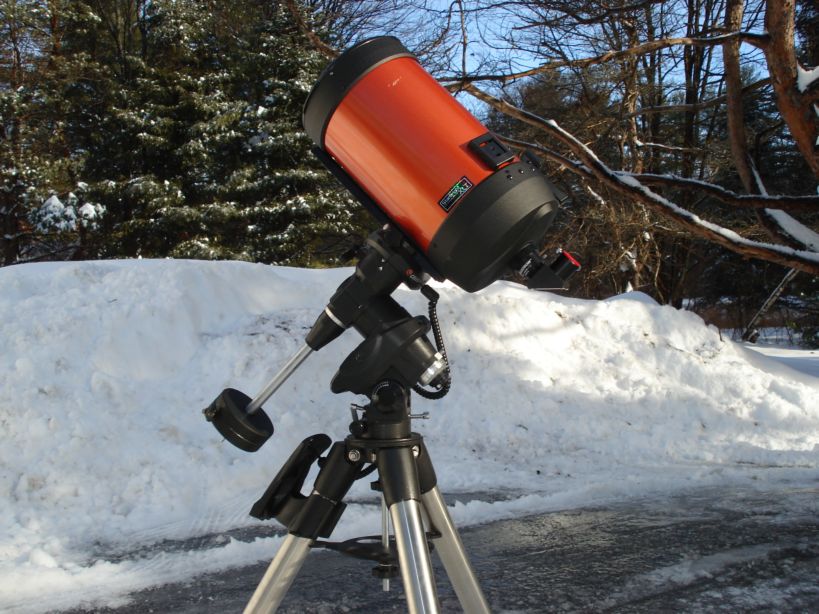
By Ed Ting
Updated 3/4/11, 3/7/11

A modern (2010 NexStar version) Celestron C8
The Celestron C8 Schmidt-Cassegrain is one of the longest running continuously produced telescopes in history (perhaps only the Questar has been around longer.) In 40+ years of production, while the mounts and accessories around the scope have changed and advanced (sometimes dramatically) the optical tube itself has changed remarkably little. Celestron started out in the 1950s as a branch of Valor Electronics, a company selling electronics to the aerospace industry (Valor is still around today, and is now known as Pulse, Inc., which sells electronic components.) Tom Johnson, who founded the company, built telescopes as a hobby. A short time later, in 1964, he founded Celestron as a division of Valor. Early SCTs ranged widely in aperture from 4" all the way up to 22". These are extremely rare today. Around 1970, Johnson teamed up with Alan Hale, a businessman, and the modern Celestron company we know today was formed..
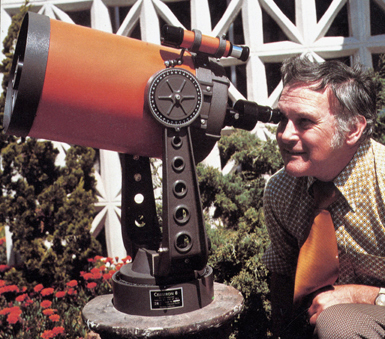
Tom Johnson and an early C8
In 1970, Celestron introduced the C8, an 8" f/10 Schmidt-Cassegrain. It sold for $795. The scope was an immediate success, offering high quality optics in a compact package that was reasonably affordable. This was during a time when almost all telescopes were handmade Newtonian reflectors. It took the resources of a large company to mass produce Schmidt-Cassegrains, which were much more complicated to make. Celestron telescopes became widely popular not only among amateur astronomers, but with institutions and the government. The original line of Celestron telescopes contain what would be considered today an odd range of apertures: There was a C10, a C12, a C16, and a C22(!) Through the years, Celestron settled into the range of apertures familiar to amateurs today - the 5" f/10, the 14" f/11, and later, in the late 1970s an 11" f/10 was added. The smaller C90 Maksutov filled in the lower end of the range. There were also 5.5 inch, 8 inch, and 14 inch Schmidt cameras in the line.

Original Celestron company logo
The C8 scopes at the time came in one compact 23 lb swing-through unit. The drives were AC powered. They were fork-mounted, with setting circles on the RA and Dec axes. The tubes were painted a distinctive orange color, which is still being used today (newer tubes have a deeper iridescent shade of orange.) Original C8 tubes used lead-based paint, so be careful around it if you own one. Since the unit was technically Alt-Az as supplied, the entire assembly had to be mounted on a a wedge and a tripod to achieve proper polar alignment. This generally didn't pose a problem for the lighter scopes like the C5 and C8, but the entire contraption got a little unwieldy as you got to the 11" and 14" models. Polar alignment was accomplished by turning the tube 180 degrees and sighting Polaris through the finder. This was awkward, and mechanically precarious on the larger models. As the industry gradually switched over to DC, Tim Gieseler introduced the Accu-Trak drive corrector system. Gieseler went on to found Orion Telescopes and Binoculars. Eventually, setting circles disappeared from the scopes entirely.
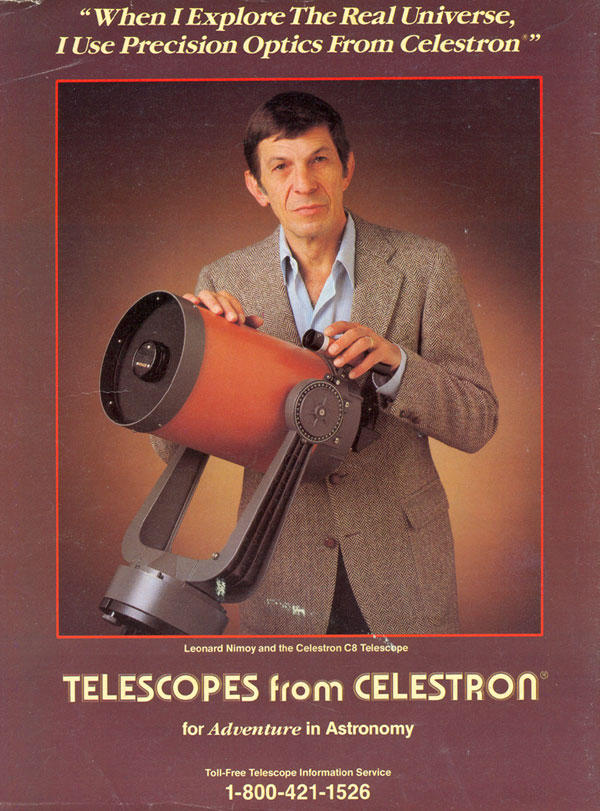
What do you mean "The Real Universe?" You mean Star Trek wasn't real??
Through the inflation-prone 1970s and early 1980s, the prices went up steadily. In a May 1981 price list, the base price for the C8 assembly was $1050. Unless you had a mount for it (which hardly anybody did back then) the scope was pretty much useless without the wedge and tripod. The wedge was $60 and the tripod was $150, and if you wanted the enhanced coatings, you had to fork over another $100. An interesting side note: The Consumer Price Index (CPI) from 1981 to 2009 rose by a factor of 2.33. So your $1360 C8 package is $3168 in 2010 dollars! Consider that right now you can get a NexStar 8 from most retailers for about $1100. If you really wanted to go to town, a C14 with coatings, wedge and tripod sold for $6550 - a cool $15,261 today (computer controlled C14s sell for $9000 - $11000 today depending on what you get.)
Celestron Price List from May 15,1981
Neither Meade nor Celestron (nor Criterion/Dynamax for that matter) were exactly shy in their advertising during this period (late 1970s - early 1980s.) I still have a collection of brochures from that era and I still get a chuckle out of reading them. Check out this obviously biased example from a 1985 Celestron catalog. It takes the reflector/refractor/catadioptric comparison chart to new heights:
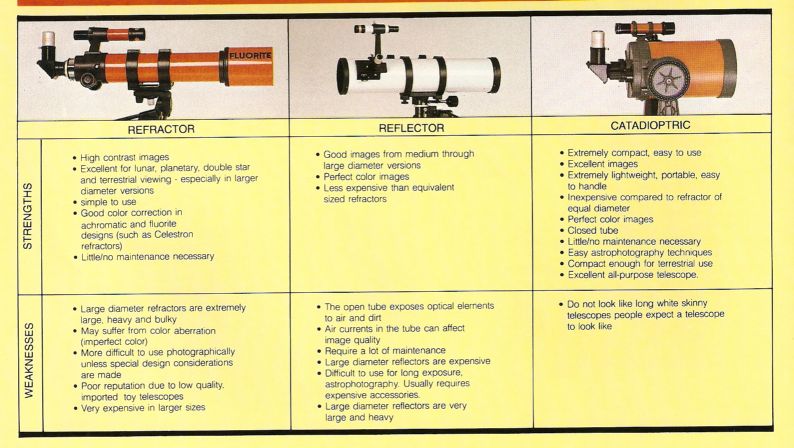
The era featured the now-famous "Celestron girls." These ads were not subtle. At the same time, Meade was going in the opposite direction with their ads, often showing nerdy scientists in white lab coats.
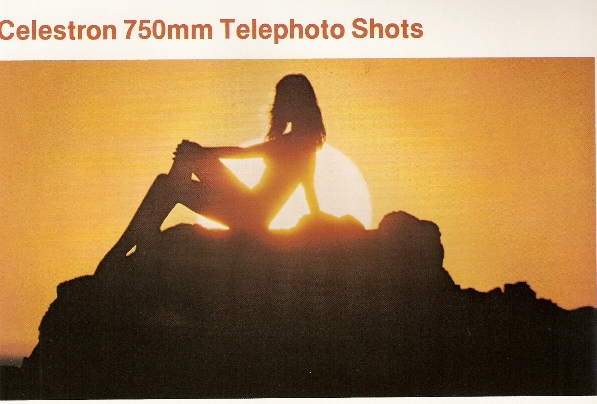
This ad makes no pretense about what you might do with that 750 mm lens
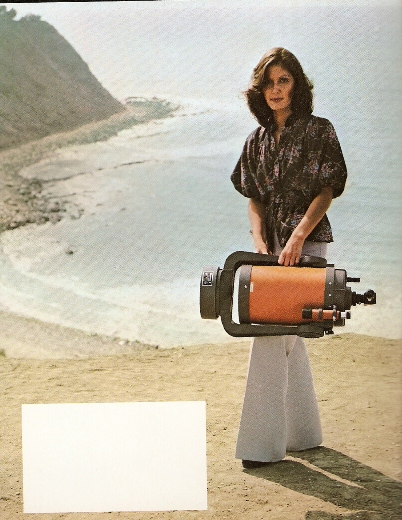
I'm a C8 and I like long walks on the beach...
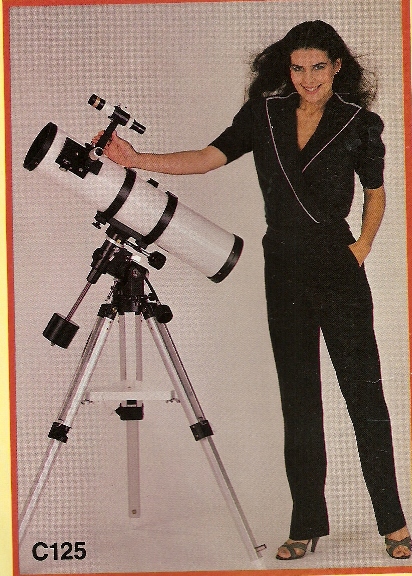
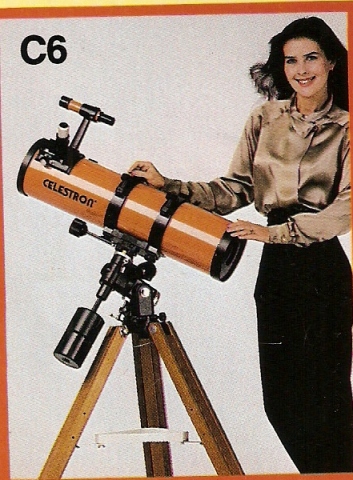
Come hither; there's a Celestron Newtonian in it for you!
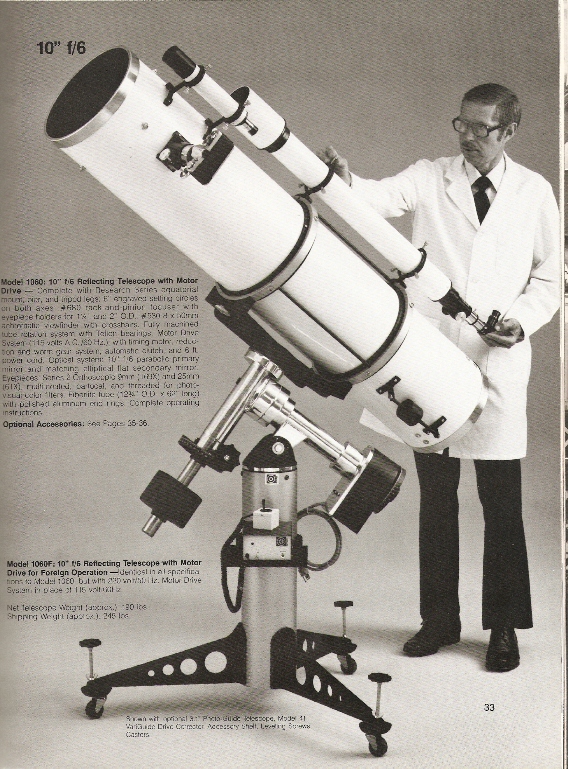
In contrast, Meade was portraying their telescopes as serious scientific instruments
As a company Celestron went through major changes starting in the 1980s. After the frenzy of the arrival Halley's Comet in 1986, sales languished. Celestron had already been sold to a Swiss company back in 1980 and by 1985 or so, quality began to slip. In 1998 Celestron was sold to the dreaded Tasco, which itself folded in 2002. Then, after operating by itself for a few years, Celestron was acquired by the Chinese Synta company in 2005. At first this raised some eyebrows, but overall, the alliance has been good. Quality has come up, and there are plenty of new products from the new Celestron company (I'm very pleased, and pleasantly surprised, at the quality of my C6, and the new C90s are a steal.)
Variations:
The C8 has been through so many incarnations that it's hard to enumerate them all. The original C8 has remained in the lineup since the beginning, but there have been a slew of offshoots:
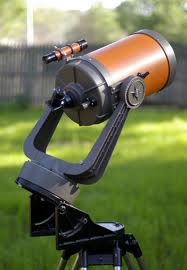
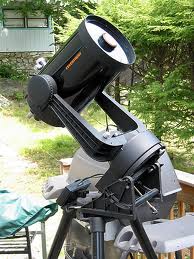
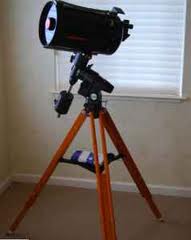
The Compustar was the first Goto C8, introduced in 1987. It was ahead of its time. Maybe a bit too ahead of its time. There have been accuracy and reliability issues. It's mostly a curiosity now, but the model does have some devotees. About $3500 new. If you get one, be sure yours has the Y2K compliant mod.
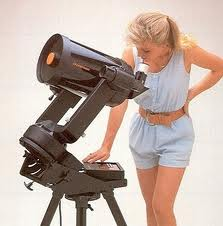
The Powerstar C8 was the first DC powered C8, made in response to Meade's then-new LX3 models in 1987. The big innovation here was the DC drive system. There were many versions and this model was produced for nearly 10 years.
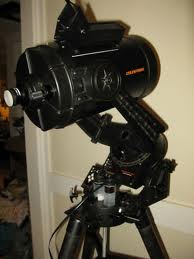
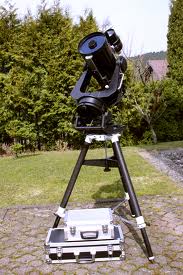
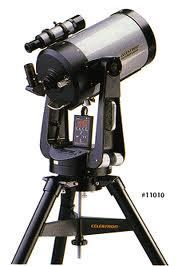
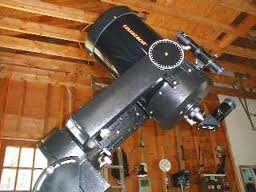
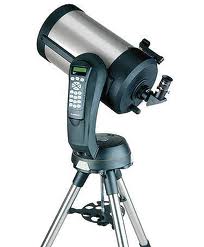
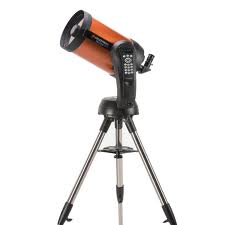
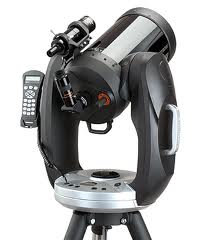
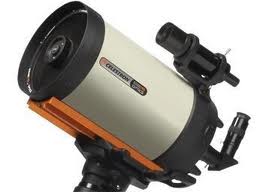
What to look for in a used C8:
Because so many of them have been made, used C8s are not hard to find on the used market. Most are quite usable today provided that they have not been abused. When considering the purchase of a used C8, it always helps to see the scope in person. Pictures help, but there is no substitute for seeing and touching the scope yourself. In reviewing the comments below, you'll see that many of the problem areas have nothing to do with the optics, which are relatively robust. It's the mount, drives, and accessories that you need to be concerned about. In brief, here is a checklist.
My own preference is to find a clean, used OTA with good optics and rail attached. The rail gives me flexibility to use a variety of mounts. The scope will likely outlast the mount, so you need the ability to remount it as needed.
-Ed
End Celestron C8 History